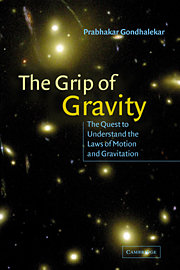Summary
Gunpowder, an invention imported from China, proved immensely popular with the warring princes of fifteenth-century Europe. These princes were using gunpowder in their frequent wars, to hurl large projectiles at or over the walls of towns and cities they were attacking. By the middle of the sixteenth century the casting and boring of cannons had progressed to a stage where serious consideration had to be given to aiming and firing of guns. All over Europe gunners began to look at ways of increasing the range and aim of their artillery. But the path of the cannon ball made no sense within the context of Aristotelian doctrine. The Aristotelian laws of motion stated that the natural state of all ‘earthly’ objects was to be at rest. Motion away from the centre of the Earth was only possible with a ‘mover’ which had to be in contact with the object being moved. When the mover was removed the object should fall straight down to Earth. But cannon balls (or projectiles generally) did not fall straight down to Earth after they left the muzzle of the gun – they followed a curved path. Even the most ardent supporter of Aristotle could see that there was a flaw in the Aristotelian laws of motion. An alternative to the Aristotelian attempts to explain the motion of projectiles was the concept of the impressed force. According to this view, there is an incorporeal motive force that is imparted to the projectile, causing it to continue moving. This view was proposed in the seventh century by John Philoponus, by the eleventh-century Persian philosopher Avicenna and the twelfth-century Arab philosopher Abu al Barakat al-Baghdadi.
- Type
- Chapter
- Information
- The Grip of GravityThe Quest to Understand the Laws of Motion and Gravitation, pp. 51 - 76Publisher: Cambridge University PressPrint publication year: 2001

